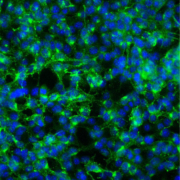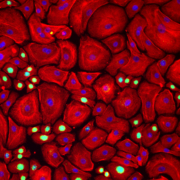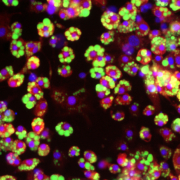2D in vitro models have been developed using 2D cell culture, a technique widely used in biological research.
These models are of great value for early drug discovery stages as well as for preclinical in vitro research in the context of cosmetic efficacy testing.
What Are 2D In Vitro Models?
A 2D in vitro model is a two-dimensional cell culture system in which adherent cells are grown on a flat surface.
In such models, cells can be cultured on plastic or glass Petri dishes, flasks, or plates.
Adherent cells only grow when attached to a surface; therefore, culture vessels require specific surface treatments to promote cell adhesion. Typically, vessels are treated to be hydrophilic and negatively charged or coated with specific proteins such as collagen, fibronectin, laminin, or poly-lysine to enhance cell adhesion.
When cultured in the appropriate medium, adherent cells grow as a monolayer, forming a two-dimensional structure.








